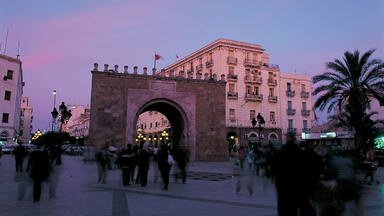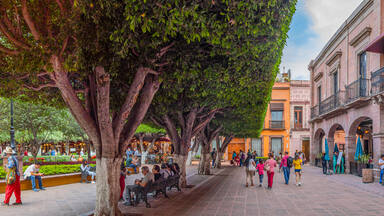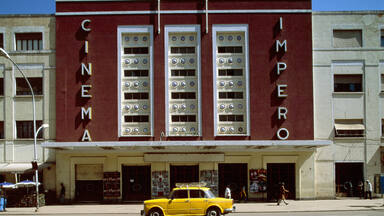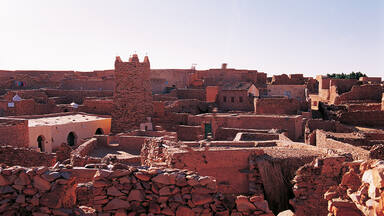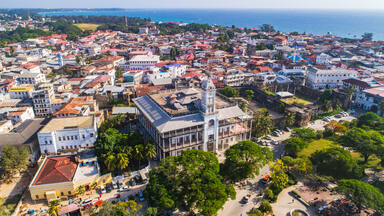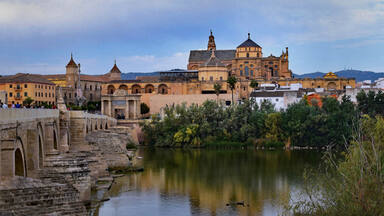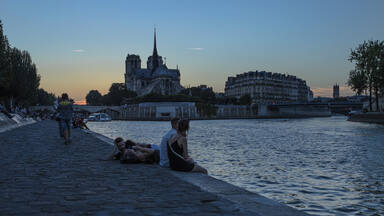"The historic city of Samarkand is a crossroad and melting pot of the world’s cultures. Founded in the 7th century B.C. as ancient Afrosiab, Samarkand had its most significant development in the Timurid period from the 14th to the 15th centuries."
Historic building attributes
"Major monuments include the Registan Mosque and madrasas, Bibi-Khanum Mosque, the Shakhi-Zinda compound and the Gur-Emir ensemble, as well as Ulugh-Beg’s Observatory.."
Traditional courtyard houses
Houses in the historical centre of Samarkand are rarely more than 100 years old but follow centuries-old traditions in their sitting and typological organisation, use of interior spaces and construction practices. Houses are closely knit, introverted structures, usually sharing party walls and built back to back to fill the entire block.
Living spaces are arranged around the courtyards in a series of rectangular or square rooms, often connected in separate blocks. Rooms are typically used flexibly, such as bedrooms at night and working and living spaces during the day, when blankets and bedspreads are stored inside chests along the room walls.
Attributes of urban elements
The historical part of Samarkand consists of three main sections:
- Archaeological reserve of the ancient city of Afrosiab: founded in the 7th century BC, it was destroyed by Genghis Khan in the 13th century. Archaeological excavations have revealed the ancient citadel and fortifications, the palace of the ruler and residential and craft quarters.
- Timurid city: the old town is articulated into districts with narrow lanes, social (mahalla) centres, mosques, madrassahs, and housing.
- European quarter: during the 19th and 20th centuries, the Russians expanded the city in European style. This area represents traditional continuity and qualities reflected in the neighbourhood structure, the small centres, mosques, and houses. Many houses retain decorated interiors grouped around courtyards and gardens.
Click on the thumbnail to open the drawing in full screen.
The mahalla centre, with its mosque, community hall and public square, is the social and cultural heart of each neighbourhood. © UNESCO, based on street views from Yandex.ru *
Interactive mapping
Use the interactive mapping tool to explore the different layers that compose Samarkand's urban heritage. Browse through the tabs to navigate through the different scales of the city and the attributes of its urban heritage identity. Expand the legend on the bottom right corner to discover more. Click on the areas and icons to open pop-ups and learn more about the different areas and buildings.
Launch in full screenAttributes of the wider setting of the city or settlement
Located in a large oasis in the Zerafshan River valley in the northeastern Uzbekistan region. The valley is a fertile agricultural area with rural settlements, rivers and channels. Modern-day Samarkand is a sprawling metropolis covering 120 km2. Over 90% of the city developed after 1950.
Intangible heritage values
Samarkand is home to several intangible cultural expressions. This includes the Art of miniature, and the Shashmaqon music, both inscribed by inscribed in the Representative List of the Intangible Cultural Heritage of Humanity
Intangible heritage dimension in Samarkand
Contribution by the Manager of the Cultural Heritage Department of Samarkand Region
The composition of the population of Samarkand was very diverse, which is explained by frequent wars and the passage of the Great Silk Road. Samarkand occupied an ideal position in this network of roads. The main mission of traders who came at different times from different parts of the world, along with the delivery of their best goods, was the constant pursuit of knowledge, the exchange of new revolutionary ideas, and the exchange of cultures, traditions, religions, and languages. This development has left its mark on the socio-cultural groups and communities of the historical city; their management is carried out by Mahallas (Neighbourhood). The division of mahallas is according to the field of activity and nationality of the mahalla.
Sociocultural groups reflect the impact that a change in human values within a certain period or a certain cultural region has on the development of architecture or technology, monumental art, urban planning or landscape planning.
The intangible heritage of Samarkand encompasses mahalla communities with their strong social ties, vibrant mahalla centres, music and dance, culinary arts, clothing and embroidery, ceramics and silk paper workshops. There are also workshops reflecting the living traditional building crafts such as carpentry (doors, windows, ceilings, cabinets...), adobe and fired brick production, earthen wall covering, stone paving, painting, and frescoes. They represent a powerful potential for the revival of the city. In addition to the inherent value of intangible cultural heritage, which necessitates its protection and preservation for future generations, it contributes to the city’s sustainable development by creating income opportunities, especially for women and youth.
References
-
Bandarin. F & Pašić. A. (2009). 2009 Report on the Reactive Monitoring Mission to Samarkand—Crossroads of Cultures World Heritage site (Uzbekistan). UNESCO World Heritage Centre and ICOMOS. https://whc.unesco.org/document/101964
- ICOMOS. (2001). 2001 Advisory Body Evaluation. https://whc.unesco.org/document/153861
-
Jing. F & Mackay. R. (2020). 2020 Report on the WHC/ICOMOS Reactive Monitoring Mission to Samarkand (Uzbekistan). UNESCO World Heritage Centre and AM/ICOMOS. https://whc.unesco.org/document/187514
- Tentieva. A & Akın. N. (2007). 2007 Report on the Reactive Monitoring Mission to Samarkand—Crossroads of Cultures World Heritage site (Uzbekistan). UNESCO World Heritage Centre and ICOMOS.
-
World Heritage Nomination Dossier 603rev. (2000). The UNESCO Archives.
Links
- Samarkand – Crossroad of Cultures, inscribed on the UNESCO World Heritage List (2001).
- Art of miniature, inscribed on the Representative List of the Intangible Cultural Heritage of Humanity (2020).
- Shashmaqom music, inscribed on the Representative List of the Intangible Cultural Heritage of Humanity (originally proclaimed in 2003)(2008).
- Palov culture and tradition, inscribed on the Representative List of the Intangible Cultural Heritage of Humanity (2016).
- Navruz, inscribed on the Representative List of the Intangible Cultural Heritage of Humanity (2016).
© UNESCO, 2023.
Project team: Jyoti Hosagrahar, Mirna Ashraf Ali, Alba Zamarbide, Carlota Marijuan Rodriguez, Giacomo Martinis, Marta Zerbini.
* Illustrations marked with an asterisk have all rights reserved. Permission is required for their reuse.
